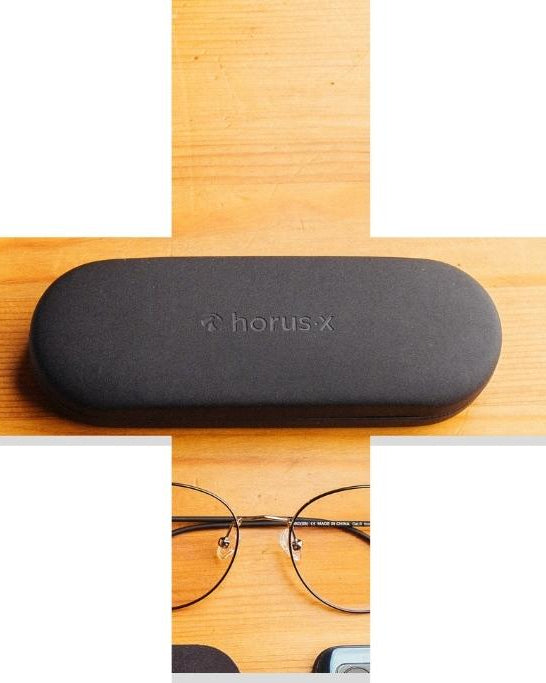Have you ever wondered how light affects our health or mood? If you've made it this far, we're guessing that it does. That's good, because we've gathered together for you all the information you need to know about the impact of light on your biological clock, the proper functioning of your body, and your health in general .
So how important is light on vital functions? Prolonged exposure to blue light is really not good for the body? How and when to expose yourself to natural light to recalibrate your internal clock?
In this ultimate guide, we tell you everything about the effects of natural light, but also artificial light on your body and mind.
Reminder: the light spectrum

First, let's lay the foundations: the light spectrum includes several wavelengths, with several different colors. Each color corresponds to a wavelength range and has a different effect on the human body . It is important to distinguish between daylight emitted by the sun (so-called natural light) and artificial light sources (screens, lighting).
🌈 The different parts of the invisible and visible light spectrum:
- 👾 Ultraviolet: part of the non-visible spectrum with very short wavelength (between 100 and 380 nanometers) which includes UVC, UVB and UVA
- 🔵 Blue: we arrive in the part of the visible spectrum with the famous blue light whose wavelength is between 380 and 500 nm
- 🟢 Green: between 510 and 560 nm
- 🟡 Yellow: 560 to 610 nm
- 🟠 Orange: between 610 and 660 nm
- 🔴 Red: wavelength between 660 and 780 nm
- 🚨 Infrared: at the other end of the light spectrum, where the wavelengths are the longest (between about 800 and 1200 nm), the light becomes invisible again. This is where infrared rays are located.
💡 Note: blue light is actually composed of several shades between violet and green . We can even distinguish two parts: harmful blue light and more beneficial blue light, while knowing that this distinction also depends on the time of day you expose yourself. But we talk about this in more detail in our article on the wavelength of blue light , another of our ultimate guides.
How daylight affects our body

If you thought that the sun was only there to see where you are walking, warm you up in the winter and tan in the summer, you are mistaken. Sunlight has a real influence on your energy, your sleep, your pace of life, your ability to concentrate, your morale and even your immune system.
A story of retina and sensors

As you might guess, it all starts at the eye level. Light rays pass through the lens and are projected onto the retina. This membrane at the back of your eye contains two types of photosensitive cells, also called photoreceptors:
- ▯ The sticks: for light intensity
- ⧍ The cones: for color rendering
Next, let's take a look at the second type of sensory sensors in the eye. There are 3 different types of cones, each with a specific molecule called opsin, a light-sensing pigment. Each type of opsin is designed to capture a given wavelength: so there are cones sensitive to red, green or blue .
It is at this stage that the light information is converted into an electrical signal: the information containing the perceived characteristics (intensity and color of the light in particular) then goes back to the brain via the optic nerve .
💡 Note: at this stage, the image is inverted! In fact, the light rays cross before reaching the retina, which gives an "upside down" image that the brain will then take care of putting back in the right direction.
But let's start again with the path of information from the eye to the brain. Rich in more than a million optical fibers, the optic nerve is only 5 cm long and 5 mm in diameter. And yet, it is the one that transmits everything your eye captures to the visual cortex , located at the back of your brain.
- Each optic nerve starts from one eye (logical). They then cross at the optic chiasm , where the information is assembled.
- They then pass through synapses located in the thalamus: this is where the first stage of information relay takes place. This initial information is transmitted to the primary visual cortex: the overall contours and colors are defined at this stage.
- Finally, at the level of the left and right visual cortex , the secondary areas refine the processing of information.
Exposure to natural light and hormones: the circadian rhythm

But what happens once the visual data has been interpreted by the visual cortex? The information influences motor functions, learning and memory (via the frontal and temporal cortex), but also the biological clock or circadian rhythm.
This natural clock is the circadian cycle, a day-night rhythm mainly based on natural light (also on variations in body temperature, which explains why there is an ideal temperature for sleeping ). Depending on the time of day, sunlight is loaded with short or long waves, which, as you can imagine, leads to metabolic chain reactions.
The hormones that depend on this famous day/night rhythm are (plug in your brain, it's going to be a bit complex 🤓):

- Melatonin: produced by the pineal gland, it is the hormone that promotes rest and falling asleep. Light (and in particular short-wave blue light in the morning or from screens) will activate retinal receptors: melanopsin ganglion cells . The message is then transmitted to the suprachiasmatic nucleus of the hypothalamus (SCN) which manages the pineal gland: the greater the dose of blue light, the more melatonin production will be blocked .
- Cortisol: the wakefulness hormone that helps you stay alert, it is mainly produced in the morning by the adrenal glands. This production involves several mechanisms, particularly at the level of the SCN (again) stimulated or inhibited depending on the wavelength and intensity of light perceived. Basically, the hypothalamus receives the information from the SCN, produces corticotropin-releasing hormone (CRH) which itself causes the production of adrenocorticotropic hormone (ACTH) at the level of the pituitary gland. This ACTH will act on the release of cortisol by the adrenal glands. The peak of cortisol secretion, which allows a state of wakefulness and alertness, is reached thanks to morning light (short waves). Note that at high doses, cortisol can be a physiological and psychological stress factor.
- Growth hormone (GH): secreted during deep sleep phases, it is essential for growth, tissue regeneration and metabolism in general . Its production is also regulated by the circadian rhythm and therefore the light perceived by your retina.
- Leptin and ghrelin: two hormones regulating the digestive system. Leptin (produced by fat cells) controls the feeling of satiety while ghrelin (produced by the stomach) acts on appetite. These two hormones are impacted by the circadian rhythm: if it is disrupted, the feeling of hunger can be distorted with a risk of impact on weight and digestion.
- Prolactin: produced by the pituitary gland when we sleep, it is involved in breastfeeding, regulation of metabolism, but also immunity. A shift in the wakefulness/wakefulness rhythm can therefore disrupt the production of prolactin and thus these essential functions.
- Reproductive hormones (LH, FSH): synthesized in the pituitary gland, they enable the production of testosterone and estrogen. Here, the influence of light is highlighted in a much less direct way than for other hormones. However, it is suggested that light influences the production of LH and FSH (respectively at the origin of the secretion of testosterone and estrogen), themselves influenced by the production of gonadotropin-releasing hormone (GnRH) in the hypothalamus. And guess who is behind the production of GnRH? The SCN of course!
Basically, circadian rhythm doesn't just influence your sleep : it's not just the link between melatonin and blue light , but the impact on your physical and mental health.
💡 Note: the study of the body's biological rhythms is called chronobiology and it is a fascinating subject to better understand how we function under normal conditions.
Light exposure and vitamin D production

Light, especially sunlight, plays a crucial role in the production of certain vitamins, including vitamin D. While this may not necessarily fall under the heading of circadian rhythm, we still wanted to mention it because vitamin D (produced through UVB exposure in the skin) is important for immune function as well as bone health.
The effects of artificial light: sleep disorders, mood swings and other discomforts

If you have followed everything that has been explained to you above, you should now have guessed the logical sequence. Used at the wrong time or too often, artificial light will in some way short-circuit the influence of natural light on your body.
First of all, know that light disrupts sleep , whatever its wavelength or color . A street light at your window, a lamp left on, your smart watch that lights up with each notification and boom! Your melatonin secretion decreases, exposing you to sleep and falling asleep disorders.
💡 Note: even a backlit e-reader or the flame of a candle can disturb your sleep. So to put all the chances on your side, fall asleep in complete darkness.
But you can guess that beyond that, the big culprit here is none other than the famous short-wave light emitted by screens or light-emitting diode (LED) bulbs. It has a significant impact on your sleep, but also on your internal clock:

- sleep disorders: insomnia, night awakenings, disruption of sleep cycles
- chronic fatigue
- difficulty concentrating and memorizing
- stress and anxiety
- dysregulation of appetite and satiety which can lead to overweight and obesity
- digestive disorders
- hypertension
- risks of type 2 diabetes
- increased risks of cardiovascular disease
But, as with everything, you have to know how to qualify: light with a blue component is not necessarily bad . On the contrary, the blue light of the morning is essential for your circadian rhythm. Hence the interest in exposing yourself to it at the right time of day!
The importance of natural light depending on the time of day

Because yes, knowing the effects of light on your body and your brain is good, making the most of it on a daily basis is better!
To realign yourself with your body's natural rhythm using light, you need to follow a few simple tips:
- 🌅 In the morning: expose yourself just after waking up to take advantage of the effects of blue light, which is very present at this time of day. Depending on the weather, you can plan a period of 5 minutes if the weather is nice, 10 minutes if the weather is overcast, or even more than 30 minutes if the weather is gray. This influx of morning light will stimulate the production of cortisol and lower that of melatonin. You are ready to start your day off right!
- 🏞️ During the day: take lunch breaks on the terrace, take regular walks to get some fresh air: not only does it maintain a good level of concentration, but it also improves digestion, regulates appetite, boosts your mood, in short, it's all good !
- 🌇 In the evening: it's not easy to live without lighting or to go to bed as soon as the sun goes down, but you can already prepare your brain for rest with a few basic tips. First, favor red/orange lights in the evening (at this point, you have understood that the light from screens and LEDs in the evening is a no-go) and reduce the intensity of all lighting. Finally, turn off screens at least 1 hour before bedtime. By doing this, you send the right signal to your body: it's time to rest, send melatonin!
💡 Please note: in addition to this protocol, we recommend that you wear quality anti-blue light glasses and category 3 sunglasses for outdoors during the day. Then, you'll be on top form!
The final word: natural light, artificial light, what impact on human beings?
- The effects of natural light on health are numerous: it influences sleep, energy, concentration, the immune system, the regulation of the circadian rhythm, hormone production, our appetite and even our mood.
- The light emitted by screens or LED lighting can disrupt our internal biological clock , impact the quality of our sleep and promote mood, metabolic, cardiac or digestive disorders. In short, not great!
- Our ideal routine for exposure to natural light: at least 5 minutes upon waking, several outings with access to light during the day and gradual turning off of lights in the evening (if possible by changing the color of the lighting to a warm white, or even low-intensity red/orange).
- To compensate for the lack of exposure to daylight , if you do not have access to natural light, you can try light therapy lamps. The effectiveness will be less, but it is an option to consider, in addition to regular outings.
















